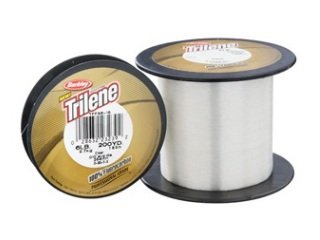 Now that you’ve learned a little bit about the popular monofilament lines, and you returned for my coverage of braid, I’m happy to see that you’ve all stuck around for the final segment of my series on fishing line: fluorocarbon. With advantages over other lines that make it ideal for specific situations, fluorocarbon has quickly risen in popularity throughout the years. With strength similar to braid and a body reminiscent of monofilament, it really feels like fluorocarbon is the best of both worlds.
Now that you’ve learned a little bit about the popular monofilament lines, and you returned for my coverage of braid, I’m happy to see that you’ve all stuck around for the final segment of my series on fishing line: fluorocarbon. With advantages over other lines that make it ideal for specific situations, fluorocarbon has quickly risen in popularity throughout the years. With strength similar to braid and a body reminiscent of monofilament, it really feels like fluorocarbon is the best of both worlds.
One distinguishable trait that fluorocarbon possesses is the fact that it’s nearly invisible beneath the water’s surface. This is because fluorocarbon is a polymer that has an almost identical light refraction index as water. Such a characteristic has made fluorocarbon a very popular line for bass fishermen who fish deeper, clear water, and when fish are less active or hesitant to bite. This also makes it a top choice for leader material for many fishermen as well (myself included), as a few feet of invisible line attached to your main line can mean a world of difference. The line also resists deterioration from sunlight, gasoline, battery acid, and DEET, all of which are popular substances for line to come into contact with in the water.
Because fluorocarbon doesn’t absorb water, it won’t weaken or stretch over time, like the nylon found in monofilament line. This also makes it more sensitive than monofilament, in terms of feeling a nibble or bite. The increased strength also makes it very abrasion resistant, like braided line, and also allows it to sink faster, which allows lures to dive deeper and faster.
The density of fluorocarbon makes it stiffer than monofilament, however, which will require some attention on the angler’s part when casting and choosing tackle. For example, baitcast reel users will need to adjust their reel to accommodate the extra momentum created by fluorocarbon’s extra weight. It’s not difficult, however. Simply adjust the mechanical brakes to match up to your line and lure weight to maximize your casting distance and protect yourself against a sudden burst of energy from a hooked fish.
With all the technology and advanced materials that create fluorocarbon, the line itself tends to be more expensive. Similar to braid, fluorocarbon, on average, will cost around seventeen to twenty dollars for a spool. Brands such as XPS, Seaguar, P-Line, and Trilene make high-quality fluorocarbons that many anglers have already fallen in love with. Stren, a company well-known for its extensive line of monofilaments, recently released its Fluorocast line, which is a strong fluorocarbon for less than ten dollars, which is absolutely worth looking into if you’ve never used the line before and are interested in trying it out.
Fluorocarbon’s numerous unique traits have allowed it to become a much-desired line among several different types of anglers. Able to be used for any number of purposes and possessing the best qualities of both monofilament and braided lines, it’s hard for anyone not to give in to curiosity and try it out. We all know that everyone has that one type of line they love to use, but if you haven’t tried out fluorocarbon yet, I urge you to pick up a spool this season. It may cost more than what you’re used to, but any qualms you may have about affordability will quickly be forgotten once you’ve used it on the water.








